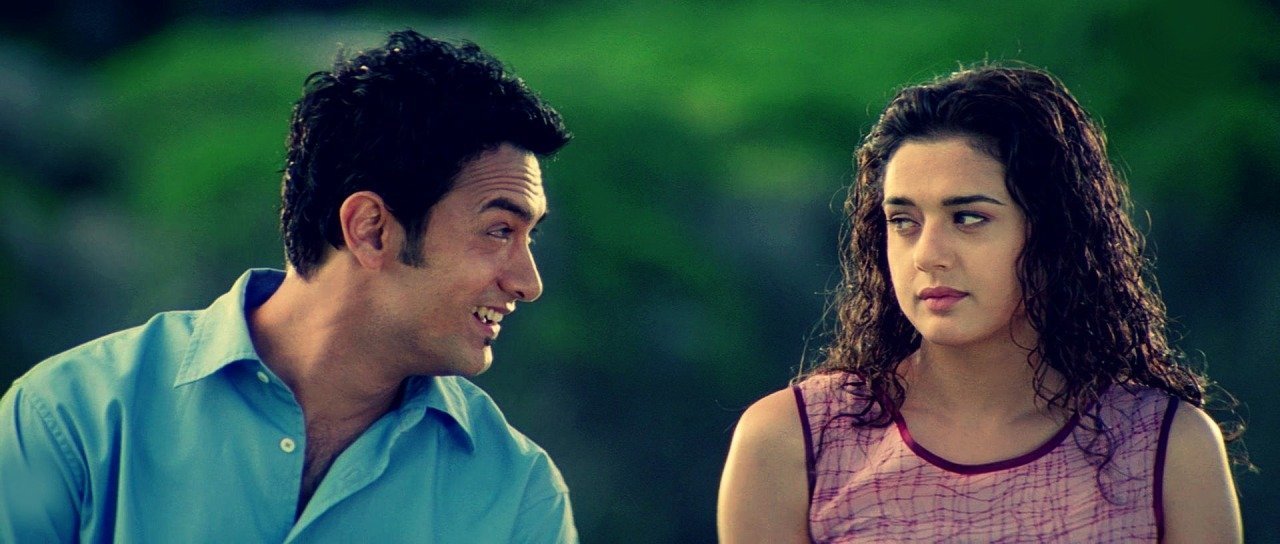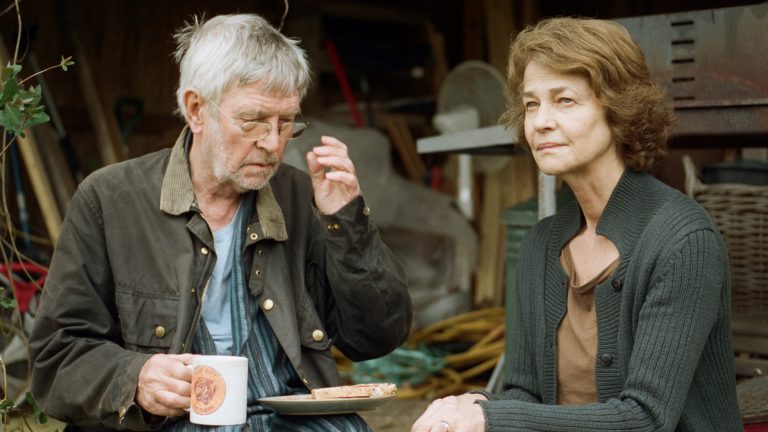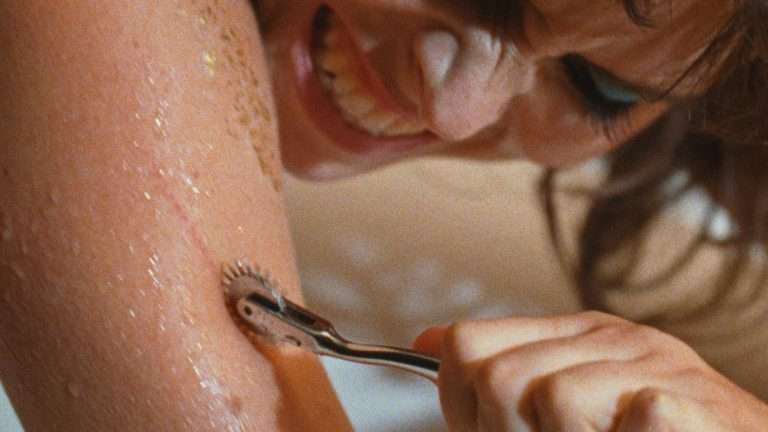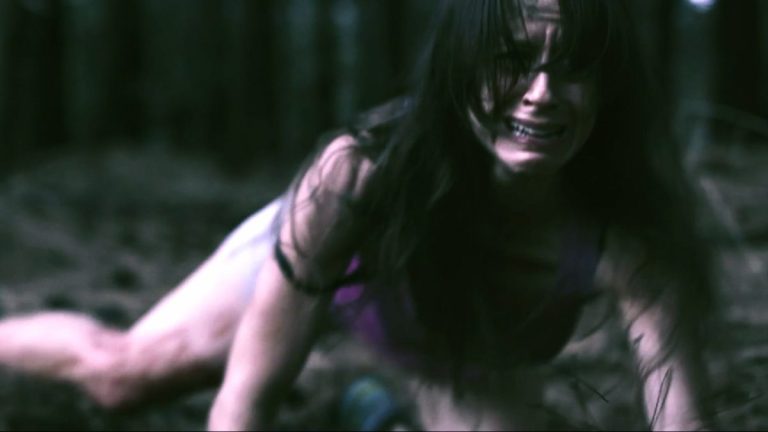24th July 2001 was the day Indian Cinema woke up to a new era, the Multiplex Era. As ‘Dil Chahta Hai’ reaches Adulthood today, we look back at a film that transported us to an India which was unknown to our cinematic universe. An India of rich urban Metrosexual Youths with their very own definition of Love, Life, and Friendship.
Three Friends Aakash, Sameer, and Sid – each character with his own idiosyncrasy yet bonded by some invisible thread. These guys couldn’t have been more different, while Aakash is a callous hedonist, Sam a confused lover who falls in love with every other girl, and Sid – The artist and the Philosopher. If we look around us, we will realize we have all had friends like these – In school or in college. Maybe not like all of them but definitely like some of them. And that’s what made this film special.
Similar to Dil Chahta Hai – THE REINCARNATION OF INDIAN CINEMA
Farhan directing his first film tapped into his personal life. The characters he etched discarded all the previous cinematic templates. The friends in his world weren’t ready to die for each other. They didn’t mind cracking a joke at the expense of their friend’s misfortune. Also, they didn’t mind putting them in place once they breached the limits of Friendship. It’s probably the first time that we saw friends on-screen discuss limits and permanence.
In an iconic scene, Sid tells his friends that they’re like ships. Forget coming every year, it’s possible that they might never ever come to this place again. Not just the protagonists, the film even embraced the so-called Extras. While in any other film, the girl in love with Aakash could have been just reduced to a caricature – Used solely as comic relief, Farhan makes sure we empathize with her. In a way he also laughs at all those pretty-sounding poetic philosophies, if she’s so good as Sid says, why can’t she have Aakash? an answer, neither Sid nor Farhan has.
A young guy falling in love with a divorced alcoholic old woman – Also a mother of a child was an extremely bold narrative choice for mainstream Bollywood at that point. Again it’s something that maybe came from a very personal space since he was married to an older woman. But it wasn’t just relationships or Friendship where he dumped every cinematic rule book of mainstream Bollywood.
His non-linear approach to the script, the way the characters dress and speak, and the terrific combination of SEL’s background score coupled with Ravi K. Chandran’s audacious camerawork was path-breaking. Whether its the use of CGI for surrealistic imageries in ” Kaisi hai ye rut”, or the use of fluorescent lighting and shaking camera – Capturing the youthful exuberance of rich kids dancing in leather pants. Even the songs had a concept and didn’t act as a distraction. Whether its the Peppy dance number at the start, the lyrics of the song becoming the anthem of a New Generation ” Koi Kahe kehta rahe kitna bhi hamko deewana ham logo ki thokar me hai ye zamana” , the nostalgia-driven tribute to the past , A surrealistic love ballad, a poetic argument on the need for love, the heartbreaking solo by Sonu Nigam or the Holiday song for generations – DIL CHAHTA HAI.
There was a neatness in the technical aspects of the film whether its the Sound design or Production design, to quote Zoya Akhtar “Characters in our films actually look rich”. It’s difficult to explain that feeling, but the difference between the production design, camerawork of Dil Chahta Hai and every other Bollywood Film till then can be compared to a White Shirt by Armani and a white shirt from some other brand. It’s essentially the same, but the texture, the fabric of Armani makes it cost 10 times more. That was true for DCH. The color palette, the way the actors were shot or the way the general ambiance was captured had a pleasing, aesthetic quality. The film redefined Coolness. All of a sudden, we all wanted to wear those tight leather pants. Have a goatee like Aakash and party in Goa and get a pic clicked at the same spot as the three guys watching the ships.
Also, Read – ART AND THE OBSTINATE EXPECTATIONS OF AVANT-GARDISM
Even if the film essentially revolved around the same old concepts of love, a couple falling in love against all odds isn’t new for Bollywood. What worked here was the treatment. Especially the use of humor. Some of the best moments of the film are when characters are cracking some of the lamest jokes. Sam says either our friendship is too deep, or this Photo is 3D. While Aakash asks a girl sitting in the same flight as her, where are you going? and then replies, wow, me you and the flight are all going to Sydney. It’s banal, yet hilarious.
In one of my favorite scenes, Shalini played by Preity misses the metro. She’s alone at the station and a creepy-looking beggar moves towards here. There’s obvious tension as the beggar keeps moving towards we can sense her fear. Then we see Aakash in the frame, and Shalini smiles like someone who saw an angel. Aakash then looks at the beggar and paces towards him angrily. The beggar looks a bit terrified, and then out of nowhere, he hugs him. Within a minute the director makes the audience go through an entire gamut of emotions from fear to anger to laughter.
The screenplay is refreshing, but the film was driven by its characters and not just the three protagonists. Dimple Kapadia delivered arguably her finest performance as a woman dealing with the image of being a bad mother. Priety Zinta shines as the bubbly and beautiful Shalini trapped in a toxic relationship and burdened by her future in law’s generosity. It’s easy to see why she falls in love with a free-spirited and carefree Aakash. Sonali Kulkarni doesn’t have much to do, but she’s involved in the funniest tracks of the film, especially the one with balloons. Even Rajat Kapoor is effective as Shalini’s young uncle. But at the end of day, it was a film about these three guys.
Saif Ali Khan as Sam is hilarious. His comic timing is Perfect. Playing the guy who isn’t the most intelligent, he plays the lover wearing his heart on his sleeve with effortless ease. He tries to act as a bridge between his friends but when he sees it isn’t working, he avoids confrontation and his feelings change at the speed of light. As said by Aakash ” Aaj Pooja kal koi Dooja.” He represents all of us at some point when we were fickle and confused. At one moment he’s against arranged marriages and in the very next he falls head over heels as soon as he sees the girl “arranged for him”. He’s a bundle of contradictions and that’s his most endearing quality.
Similar to Dil Chahta Hai – THE 20 BEST BOLLYWOOD MOVIES ON NETFLIX RIGHT NOW
Akshaye Khanna is the soul of the film. His Sid is inherently a recluse. Even his best friends don’t know him. He’s an eternal romantic and an idealist. He’s pragmatic and even though he doesn’t agree with Aakash on a lot of things, he doesn’t mind playing along until a threshold is crossed. But interestingly, even he moves on rather easily towards the end. The scene where he starts walking, then slowly paces and then starts running again represents all of us when we were about to meet our first crush. He plays the role of a young guy with unadulterated love to Perfection. She’s the key to unlock the doors of all his desires and his most beautiful painting.
And Finally Aakash. He’s bossy, condescending and has an air of vanity. He loves his friends but has an inflated ego. He doesn’t care about their relationship. If it doesn’t work for him then it’s better for them to leave. He mocks both Sameer and Sid. While Sam doesn’t seem to mind, he is the reason why their group breaks up. He lacks empathy or the sensibility to understand Sid’s feelings. Even later when he seems to have improved, he breaks into Shalini’s wedding and almost destroys not just her wedding but even her relationship with the people who cared for her like her parents.
It’s essentially a very self-centered, and manipulative character. Yet we root for him and care for him. There’s something charming about his narcissism and Aamir Khan plays him to perfection. Everything from his mannerism to his tone, to the way he moves his eyebrows or laughs – He gets into the skin and headspace of character. He plays a very relatable guy while maintaining that narcissism. Nothing explains it more than when Shalini asks him why does he keep changing Girl friends. He looks at her quizzically and answers if she wants to get married to him. Even when he comes to meet Sid, he doesn’t forget to add that he’s a perfectionist. Interestingly, the very same year he played an illiterate young villager in Lagaan. And that character was the polar opposite of Aakash. While in Lagaan, he always maintains a fixed gaze – His vision is clear, he rarely blinks and he maintains a posture of someone who isn’t willing to bend, in Dil Chahta Hai there’s lot more dynamism in his body. He’s far more restless and speaks much faster.
What makes Dil Chahta Hai an iconic film in terms of cinema is that it set a new template for filmmaking. Excel Entertainment since then has been using the same structure for multiple films. Whether it’s Zindagi Na Milegi Dobaara or Rock On, structurally they’re similar. Three friends – Two of them have a fight and eventually they come together. But that’s a small part.
The larger impact of this film can be seen when we discuss Popcorn entertainment and Multiplex cinema. This film gave filmmakers and even production houses the courage to back auteur-driven films. Films that don’t follow a tested formula. It gave a breathing space and acted as oxygen for so many young filmmakers who were till then dependant on either NFDC backed films, or festival circuits. It allowed filmmakers to pen down personal stories without being haunted by the economics of film-making. And even writers with offbeat scripts got the courage to approach big stars and production houses. The film opened up a new realm for filmmakers who didn’t want to be classified as artsy or parallel cinema filmmakers and having grown up on Hollywood and International cinema they couldn’t even relate to the mainstream masala.
At the of the day, the greatness of this film lies in the fact that it gave us relatable characters. They talked and behaved like us and our friends. They were egotistical, pretentious, stupid, arrogant and confused. Yet they were humane and real. That’s why almost two decades later when you ask someone like Karan Johar the year that changed cinema. He always answers 2001 – And Dil Chahta Hai was the film that rewrote the Rules of the Game.
Dil Chahta Hai Links – IMDb, Rotten Tomatoes
Dil Chahta Hai Cast – Aamir Khan, Saif Ali Khan, Akshaye Khanna, Preity Zinta, Sonali Kulkarni, Dimple Kapadia, Rajat Kapoor, Sushasini Mulay, Suchitra Pillai






![Mrs. America [2020] Review – A tale of revolution, with a counter revolutionary at the center](https://79468c92.delivery.rocketcdn.me/wp-content/uploads/2020/10/Mrs.-America-1-highonfilms-768x512.jpg)

![The Bad Man [2021]: ‘Locarno’ Review – How the Brutality of War Changes a Man](https://79468c92.delivery.rocketcdn.me/wp-content/uploads/2021/08/The-Bad-Man-768x405.jpeg)
![Dogs Don’t Wear Pants [2019]: ‘MUBI’ Review – A terrific visual treat in an imperfect film](https://79468c92.delivery.rocketcdn.me/wp-content/uploads/2020/10/Dogs-Dont-Wear-Pants-highonfilms-2-768x432.jpg)